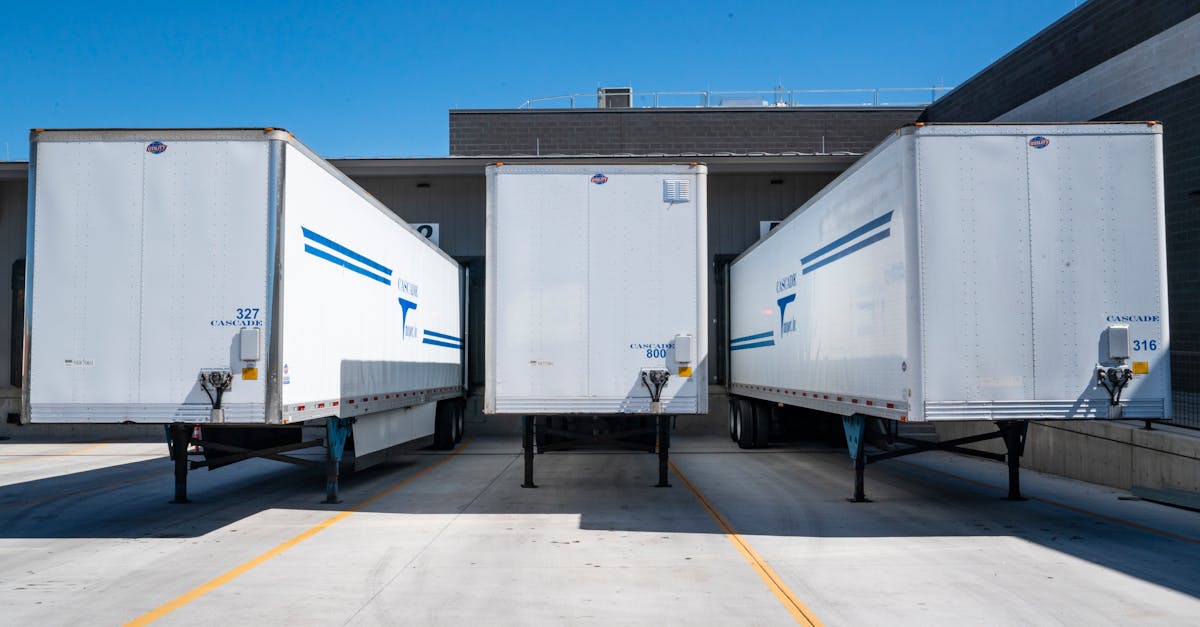
How to Optimise Delivery Routes for Faster Service
Evaluating Delivery Time Metrics
Delivery time metrics provide essential insights into the efficiency of logistics operations. These metrics often include average delivery time, on-time delivery rates, and lead time variability. By analyzing these measurements, businesses can identify patterns that help pinpoint areas requiring improvement. Variability in delivery times can indicate potential challenges in route planning or driver performance, ultimately affecting customer satisfaction.
Regularly reviewing these metrics allows companies to make data-driven decisions regarding their delivery processes. By comparing performance across different routes, drivers, and time periods, managers can determine which factors most significantly impact delivery times. This systematic evaluation helps organizations prioritize enhancements, whether through better route optimization, driver training, or resource allocation, ensuring a more streamlined and quicker delivery process.
Tracking Performance and Improvements
Measuring delivery performance is crucial for identifying areas of improvement. Utilizing key performance indicators such as delivery time, on-time rates, and customer satisfaction can provide valuable insights. Regularly analyzing these metrics allows businesses to pinpoint inefficiencies and address them proactively. Incorporating technology, such as GPS tracking systems, can enhance data accuracy and reliability during this evaluation process.
In addition to quantitative metrics, qualitative feedback from drivers can offer perspectives that numbers alone might not reveal. Regular debriefs with delivery personnel can highlight recurring challenges on the road and suggest potential solutions. Establishing a culture where drivers feel comfortable sharing their experiences fosters a continuous improvement mindset. Cultivating this environment encourages ongoing dialogue about performance, ultimately leading to more efficient delivery routes and better service overall.
Training Drivers for Efficient Navigation
Effective navigation is crucial for timely deliveries. Training drivers on the latest GPS technology enhances their ability to choose optimal routes. Familiarizing them with various navigation apps can also provide alternatives during unforeseen roadblocks. Regular practice in local areas helps drivers develop an intuitive understanding of shortcuts and potential traffic issues.
Coaching sessions focused on real-world scenarios can encourage quick decision-making skills. Pairing inexperienced drivers with seasoned mentors fosters knowledge sharing and builds confidence. This hands-on approach ensures that new recruits learn from practical experiences. In addition, encouraging regular feedback between drivers can help identify common challenges and collectively refine techniques.
Best Practices for On-the-Road Decisions
Efficient on-the-road decision-making is crucial for enhancing delivery speed. Drivers should be trained to adapt to real-time conditions such as traffic and weather changes. This flexibility allows for quick rerouting when necessary. Utilizing navigation systems that provide live updates can significantly improve travel efficiency.
Communication among team members also plays a key role in successful navigation. Drivers should have access to support staff who can provide timely information on delays or obstacles along the route. This collaboration fosters a proactive approach to addressing challenges as they arise, ensuring that deliveries remain on schedule.
Utilizing Customer Feedback
Collecting customer feedback provides valuable insights into delivery experiences. By encouraging customers to share their thoughts, businesses can identify common pain points that may affect route efficiency. Surveys, online reviews, and direct communication channels are effective methods for gathering this data. Understanding what customers value most allows companies to refine their delivery processes and adjust routes accordingly.
Analyzing the feedback received can highlight trends related to specific locations or times of day. For instance, if multiple customers report delays in a particular area, this issue warrants immediate attention. Adjustments can be made to delivery routes based on this information. Continuous improvement through customer feedback promotes better service and enhances overall satisfaction.
Gathering Insights for Route Adjustments
Customer feedback serves as a valuable resource for making informed adjustments to delivery routes. Gathering insights from customers about their experiences, preferences, and any issues they encountered can highlight critical areas for improvement. Surveys, follow-up emails, and direct communication during the delivery process can provide real-time data that is essential for refining logistics. This information helps identify patterns in delays or service complaints, enabling businesses to adapt their routes accordingly.
Analyzing data from multiple sources allows for a holistic view of delivery processes. Integrating customer feedback with performance analytics can enhance the decision-making process regarding route changes. Tools such as GPS tracking, traffic reports, and weather forecasts further contribute to understanding the dynamic conditions affecting deliveries. By continuously assessing this data, companies can make proactive adjustments that enhance overall efficiency and customer satisfaction.
FAQS
Why is it important to evaluate delivery time metrics?
Evaluating delivery time metrics helps businesses identify areas for improvement, optimize routes, and enhance overall service efficiency.
How can I track performance improvements in my delivery routes?
You can track performance improvements by analyzing delivery times, reviewing customer feedback, and using routing software that provides detailed analytics on each delivery route.
What are some effective training methods for drivers to improve navigation?
Effective training methods include utilizing GPS technology, conducting route simulations, and providing regular workshops on traffic patterns and local shortcuts.
What best practices should drivers follow for on-the-road decisions?
Drivers should stay informed about real-time traffic updates, use efficient navigation tools, and maintain communication with dispatch to adapt quickly to changing conditions.
How can customer feedback contribute to optimizing delivery routes?
Customer feedback offers valuable insights into delivery experiences, allowing businesses to make informed adjustments to routes that enhance service satisfaction and efficiency.
Related Links
What to Consider When Offering International Delivery OptionsHow to Choose the Right Delivery Option for Your Business
A Review of Popular Delivery Services in 2023
Roundup of Trends Shaping Delivery Options in 2023
5 Best Practices for Managing Delivery Options Effectively